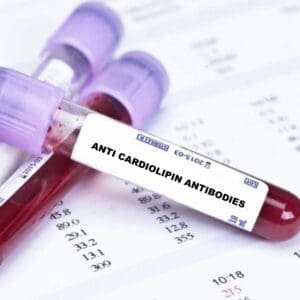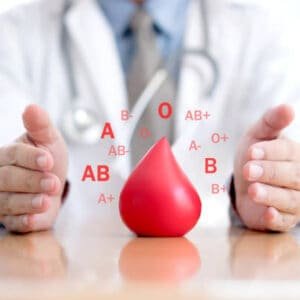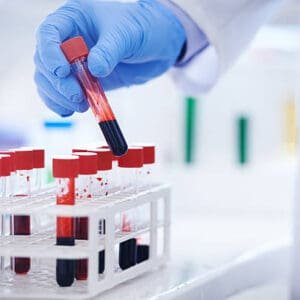Description
What Is the Cancer Antigen 15-3 Blood Test?
A tumor marker test used to monitor metastatic breast cancer
There are various tools used to monitor cancer’s response to treatment. For some cancers, tumor marker blood tests can provide information to the treatment team. While these tests should not be used alone, they can let your team know if more testing or exploration might be warranted. The CA 15-3 blood test is one of these markers.
The cancer antigen 15-3 (CA 15-3) biomarker test is used to monitor breast cancer and its response to treatment. The CA 15-3 antigen is a protein released into the bloodstream by breast cancer, various other cancers, and even some benign (noncancerous) conditions.
CA 15-3 is one of several substances classified as tumor markers, which may increase as a malignancy progresses and decrease as a tumor gets smaller as it responds to cancer therapy. The CA 15-3 is one of several tumor markers used to monitor people with stage 4 breast cancer (also known as metastatic breast cancer).1 While some oncologists (specialists who treat cancer) will use the test as a way to detect breast cancer recurrence, it is not recommended for this purpose.
Read on to learn more about the CA 15-3 blood test, what it does and what it means, and what you can expect when this test is ordered for you.
Purpose
CA 15-3 is an antigen that’s normally found in breast tissue. Antigens are Y-shaped proteins that identify a cell, acting as its unique “signature.”
While the CA 15-3 antigen does not cause cancer, the level can increase as cancer cells multiply. The number of CA 15-3 antigens will increase in unison with a tumor’s growth.
That said, not all breast cancers produce CA 15-3 antigens. This is especially true with early-stage breast cancer. Fewer than half of patients with early-stage breast cancer will show elevations in CA 15-3 values. By contrast, up to 80% of people with metastatic breast cancer (breast cancer in late stages that has spread) will have increased CA 15-3 levels.2
These dynamics make the CA 15-3 useful for monitoring stage 4 breast cancer or establishing secondary tumors in other parts of the body. If your oncologist orders a CA 15-3 test, it may be for one of these two reasons:3
By regularly tracking your CA 15-3 values, your oncologist can assess how effective your cancer treatment is.
If CA 15-3 antigens rise over a certain level, it may indicate worsening of your disease and may guide a search for metastasis in other parts of the body (most often the bones or liver).
:max_bytes(150000):strip_icc():format(webp)/cancer-antigen-15-3-blood-test-for-breast-cancer-430608-Final-3ff12d280e8f4828beab8217d557c685.jpg)
Limitations
Although the CA 15-3 test is valuable for monitoring breast cancer, it is less reliable when used for cancer screening. This is partly because the CA 15-3 is not specific to breast cancer.
Other benign and malignant conditions can also cause increases, such as:
Acute hepatitis (an infection causing liver inflammation)
Benign breast conditions
Colon cancer
Endometriosis (uterine tissue growing outside the uterus)
Liver cancer
Liver cirrhosis (scarring of the liver caused by long-term conditions)
Lung cancer
Lupus (autoimmune disease causing inflammation of many body systems)
Pelvic inflammatory disease (infection of a woman’s reproductive organs)
Pancreatic cancer
Prostate cancer
Sarcoidosis (a condition causing small swollen patches to form in organs)
Tuberculosis (infectious disease of the lungs).
Even pregnancy can increase CA 15-3 levels, giving the false impression of disease progression or recurrence.
The CA 15-3 test also has low sensitivity and sometimes doesn’t increase when people have breast cancer. In fact, according to a 2015 study from Germany, the CA 15-3 test has a sensitivity of only 55.6% when used to diagnose metastatic breast cancer.
Routine mammograms are still considered the frontline tool for breast cancer screening in most countries.
Risks and Contraindications
There are few risks associated with the CA 15-3 test. The test requires a blood draw, which may cause mild pain, redness, or bruising. Light-headedness and fainting may also occur. Infection is rare following a blood draw if standard health precautions are taken.
Less commonly, the blood draw may cause the leakage of blood beneath the skin, leading to the formation of a hematoma. Most small hematomas go away on their own; larger ones may require treatment.
Before the Test
The CA 15-3 is a blood test typically performed along with a complete blood count (CBC), liver functions tests, and kidney function tests. There are no preparations needed for any of these tests.
Timing
The blood draw takes only a few minutes. Depending on the registration and the waiting time, your appointment can take 30–90 minutes.
Location
The CA 15-3 test can often be performed at the oncologist’s office during your visit. Otherwise, you may be referred to a nearby lab.
What to Wear
You should choose a top that has either short sleeves or sleeves that can be easily rolled up. If you plan to return to work after the test, you may want to wear long sleeves to cover the bandage or puncture mark on your arm.
Food and Drink
There are no food or drink restrictions for the CA 15-3 test.
If you have small veins, it often helps to drink a couple of glasses of water before the test. Doing so won’t affect the results but may plump your veins and make the blood draw easier.
Medication Use
Certain medications and supplements can interfere with the CA 15-3 test. Among them is biotin (also known as vitamin B7, vitamin B8, vitamin H, or coenzyme R). The CA 15-3 test relies on biotin to bind to the CA 15-3 antigen and may be affected if too much biotin is consumed.
While the recommended daily intake of biotin is unlikely to cause any harm, high-dose biotin supplements may trigger false-negative readings. Stop taking any supplement containing more than 0.03 milligrams of biotin 72 hours before the test.
In addition, the targeted cancer drug Afinitor (everolimus) may cause paradoxical effects. The drug may cause CA 15-3 levels to rise when treatment is working (resulting in a false-positive result) or drop when treatment is failing (resulting in a false-negative result that appears negative when it is actually positive
Throughout the Test
The phlebotomist will be wearing disposable gloves and will begin by gently pressing their fingers against your skin to locate the best vein.
Once the vein is selected, they will place a tourniquet around your upper arm and ask that you make a fist. You may be asked to pump your fist several times if your veins are small. The site is then swabbed with an alcohol pad.
You will feel a small prick as the needle is inserted. For the CA 15-3 test, the phlebotomist will need to obtain a minimum of 0.3 milliliters of blood. The vacuum-sealed test tube will usually have a red top or a gel barrier.
Once the needle is withdrawn, a cotton ball or gauze is placed on your arm until the bleeding stops. The phlebotomist then applies an adhesive bandage over the puncture wound.
Post-Test
You should be able to leave shortly after your test as long as you are not bleeding or feeling woozy. You can then continue your day as usual.
After the Test
You may feel sore or develop redness or bruising at the puncture site. These issues will usually resolve on their own without treatment. If needed, you can take Tylenol (acetaminophen) to help alleviate the pain.
If you develop a small lump, you can apply a cold compress on your arm for 20 minutes several times a day to relieve the swelling. Do not apply ice directly to the skin or leave it on for longer.
Interpreting Results
The results of your test should be sent to your oncologist within three to five working days. The report will include a reference range outlining the normal and abnormal CA 15-3 levels. This is based on the expected values within a population and can vary slightly from one lab to the next.
Generally speaking, a CA 15-3 value of 30 units per millimeter (U/mL) or less is considered normal.9 With that being said, a single value is generally not as helpful in diagnosis as serial values, in which your results are routinely measured during the course of treatment.3
Your CA 15-3 level must be evaluated in conjunction with a physical examination, diagnostic imaging, and other blood tests.
Higher CA 15-3 levels typically correspond with more advanced stages of breast cancer.1 The highest levels tend to be seen in metastatic breast cancer, particularly when the liver or bone is involved. However, CA 15-3 levels can be low or normal even in advanced disease since not all breast cancers produce CA 15-3.
Sometimes CA 15-3 levels can be abnormally elevated during the first four to six weeks of new cancer therapy. Any treatment that disrupts a tumor can cause a temporary rise in tumor markers. To avoid misinterpretation, the CA 15-3 test should be performed at least two to three months after starting a new treatment.
Follow-Up
If your CA 15-3 results are elevated, your oncologist will likely order additional tests. If the elevation is minimal, the healthcare provider may take a watch-and-wait approach and order a repeat test several weeks later.
If elevation persists or increases, your healthcare provider may order additional testing.
This may include:
- Imaging tests, such as an ultrasound, computed tomography (CT), positron-emission tomography (PET), or bone scan
- Other tumor marker tests to check for other cancers (such as the CA 125 antigen for ovarian cancer or the alpha-fetoprotein for liver cancer)
- Blood tests to check for liver dysfunction, viral hepatitis, or autoimmune antibodies (immune proteins that mistakenly attack a person’s healthy tissue or organs)
- TB skin test to check for tuberculosis
- Biopsy to check for suspicious growths or sarcoidosis
- CellSearch circulating tumor cell (CTC) test, a newer assay used to monitor metastatic breast and some other cancers
Summary
While a CA 15-3 blood test might be helpful to your doctor as part of the bigger picture, it is not the only test that should be used to monitor your response to treatment. Because of all of the factors that can cause fluctuating antigen levels, it’s best to see this as just another tool your doctor uses for treatment and monitoring.
While it is most effective in monitoring advanced breast cancer and its response to treatment, even with metastatic breast cancer, this is not the only evaluation tool available.







Reviews
There are no reviews yet.